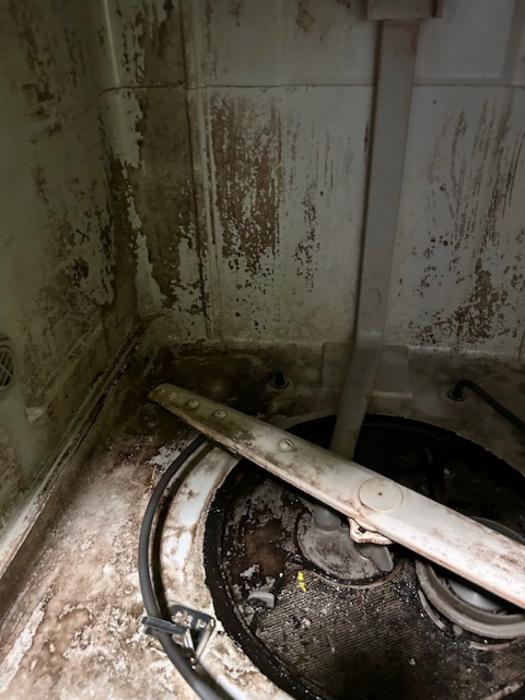Beneath the everyday surfaces of our homes lurks an unseen world teeming with life forms that challenge our traditional concepts of habitability and survival. Microbiologist James Henriksen from Colorado State University illuminates this hidden biosphere, emphasizing that extremophiles—organisms thriving in conditions hostile to most life—may hold the key to innovative climate change mitigation strategies. These resilient microorganisms inhabit commonplace household devices such as water heaters, air conditioners, and dishwashers, where fluctuating environmental stresses provide ideal niches for their survival and adaptation.
Extremophiles possess biochemical and genetic adaptations that allow them to flourish under extreme temperatures, pH variations, moisture levels, and chemical exposures. Henriksen’s research focuses on harnessing these unique traits, which include the capacity to sequester carbon dioxide or metabolize environmental pollutants. Such metabolic specializations suggest untapped potential for biologically based solutions to reduce atmospheric greenhouse gases and remediate contaminated environments, aligning microbial ecology with urgent environmental engineering challenges.
The progressive initiative “The Extremophile Campaign: In Your Home” has been launched as a collaboration among CitSci, the Two Frontiers Project, and SeedLabs, aiming to integrate community participation into the scientific discovery process. This participatory science endeavor encourages individuals nationwide to document microbial life within their residences, transforming living spaces into research laboratories. By crowd-sourcing environmental observations, scientists can collect vast and diverse data sets far beyond what traditional laboratory or field sampling might yield.
Already, this campaign has generated promising results. Henriksen and his collaborators report the identification of novel microbial species exhibiting remarkable functional traits. One such discovery is a recently characterized microbe nicknamed “Chonkus,” a cyanobacterium collected from volcanic ocean vents off Vulcano Island in the Aegean Sea. The environment from which Chonkus originates is characterized by intense CO2 concentrations, acidity, and thermal flux, simulating extreme geochemical stressors akin to those projected in anthropogenically altered ecosystems.
Chonkus demonstrates an extraordinary proficiency for carbon fixation via photosynthesis, surpassing rates associated with typical multicellular plant processes. This unicellular organism actively captures dissolved CO2 and rapidly sinks, effectively functioning as a biological carbon sink. Its unique physiology and behavior offer a compelling model for biogenic carbon sequestration strategies with potentially transformative applications in climate change mitigation technologies.
Microorganisms such as cyanobacteria constitute approximately half of the global oxygen production and underpin critical biogeochemical cycles, notably carbon and nitrogen fluxes. Despite their ubiquity, the microbial diversity within anthropogenic habitats remains relatively unexplored. Henriksen underscores the vast unknown territories of microbial ecology within everyday environments, likening it to a rainforest of life types that remain understudied and understood.
The Two Frontiers Project, co-founded by Henriksen, is emblematic of a broader effort to chart microbial biodiversity across extreme environments on Earth and beyond. The scope spans from oceanic abyssal plains and geothermal springs to extraterrestrial analogues in space habitats. Within this continuum, domestic microhabitats emerge as vital and accessible arenas for microbial exploration, bridging community science and frontier research.
Household environments often contain microbial communities that reside innocuously yet contribute to complex biofilm formations—multicellular aggregates of microbes embedded within extracellular polymeric substances. These biofilms, typically slimy or crusty, form on surfaces transitioning between wet and dry phases, including dishwashers and water heaters. Their physical manifestations act as phenotypic markers for potential extremophile presence and metabolic activity.
Public participation in the Extremophile Campaign involves documenting biofilms and microbial growth through photographic evidence and detailed environmental descriptions. When samples present unique or particularly promising microbial features, researchers dispatch collection kits to participants, enabling the recovery of physical specimens for advanced molecular analyses. Metagenomic sequencing techniques are then applied to elucidate the community genomic composition and identify functional genes associated with stress tolerance, carbon metabolism, or pollutant degradation.
Beyond homes, natural spring ecosystems provide similarly extreme microhabitats, often characterized by elevated carbon dioxide levels and unique chemical signatures. In regions such as Colorado and California, these springs showcase microbial mats and biofilms demonstrative of hard environmental conditions, with microbes adapted to highly carbonated, acidic, and thermally variable waters. Such wild extremophile populations represent invaluable reservoirs for biotechnological applications and ecological studies.
Researchers invite citizens familiar with these springs to join a complementary citizen science campaign, “The Extremophile Campaign: In The Wild,” aimed at mapping and characterizing extremophile niches in natural settings. This initiative expands the scope of participatory research, integrating in situ environmental observations with laboratory-based investigations to build a holistic understanding of extremophile diversity and ecosystem function.
The prominence of platforms like CitSci.org is fundamental in orchestrating these distributed science efforts. CitSci provides the technological infrastructure and data stewardship necessary to consolidate observations, facilitate communication between participants and scientists, and maintain data accessibility. Founded two decades ago by CSU graduate students, CitSci exemplifies the potential for digital tools to democratize science, allowing global and local scale participatory engagement in ecological research.
Henriksen’s vision integrates traditional microbiology, ecology, and environmental engineering with cutting-edge genomics and citizen science methodologies. By harnessing communal efforts, researchers can accelerate the discovery of extremophiles with biotechnological applications essential for addressing pressing global challenges such as climate change, environmental pollution, and sustainable resource management. The hidden microbial worlds within our homes and natural landscapes may well reveal powerful allies in humanity’s pursuit of planetary health.
—
Subject of Research: Microbial Extremophiles and Their Role in Climate Change Mitigation
Article Title: Unveiling Extremophiles at Home: Microbial Guardians in the Fight Against Climate Change
News Publication Date: 2024
Web References:
– https://citsci.org/projects/the-extremophile-campaign-in-your-home
– https://twofrontiers.org/
– https://seed.com/seedlabs
– https://www.biorxiv.org/content/10.1101/2023.10.30.564770v1.abstract
Image Credits: Susan S./CitSci.org (CC-BY 3.0 License)
Keywords: Microorganisms, Microbial diversity, Microbial ecology, Bacteria, Cyanobacteria, Extremophiles, Thermophiles, Microbial genetics, Carbon capture, Bioremediation, Climate change mitigation, Metagenomics, Biofilms, Photosynthesis




